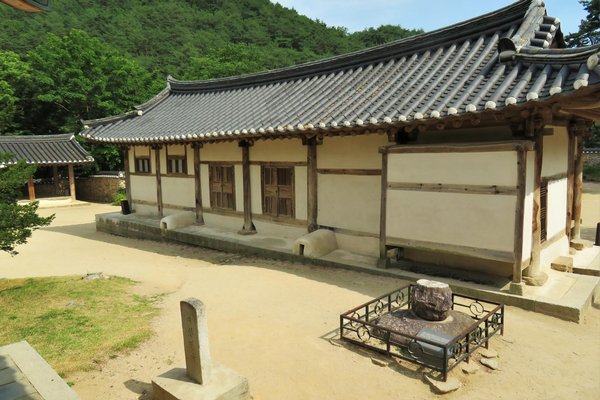Republic of Korea
Seowon, Neo-Confucian Academies
Seowon, Korean Neo-Confucian Academies, are nine Academies that are relevant for their architectural types and their role in education and society.
In these 16th and 17th-century Academies, Neo-Confucianism took its local Korean form and from there, it was spread across the country. Mainly, aristocrats and future civil service administrators were educated here. Each Academy was associated with a venerated scholar and was built in a natural setting of mountains and water.
Community Perspective: 8 out of 9 Academies have been covered by our reviewers so far: Dosan (Els), Sosu (Kyle, Philipp), Byeongsan (Jarek, Clyde, Philipp), Donam (Philipp), Museong (Philipp), Namgye (Philipp), Oksan (GabLabCebu, Frederik), and Dodong (Frederik). Pilam Seowon is still unreviewed.
Site Info
Official Information
- Full Name
- Seowon, Neo-Confucian Academies of the Joseon Dynasty (ID: 1498)
- Country
- Republic of Korea
- Status
-
Inscribed 2019
Site history
History of Seowon, Neo-Confucian Academies
- 2019: Criteria
- Crit iv not recognized
- 2019: Inscribed
- Inscribed
- 2016: Requested by State Party to not be examined
- After Deferral advice by ICOMOS, aimed at selection of this particular 9 seowon out of over 400
- Type
- Cultural
- Criteria
- iii
Links
- UNESCO
- whc.unesco.org
- Official
-
- mcst.go.kr — Basic info plus further links by Ministry of Culture, Sports and Tourism
- Related
-
- youtube.com — A 6 episode K-drama web series produced by the Korea Heritage Service in 2020. It features all 9 Seowon in a light-hearted (albeit silly) story called ‘300 Year-old Class of 2020’.
All Links
UNESCO.org
- whc.unesco.org — whc.unesco.org/
Official Website
- mcst.go.kr — Basic info plus further links by Ministry of Culture, Sports and Tourism
Related Resources
- youtube.com — A 6 episode K-drama web series produced by the Korea Heritage Service in 2020. It features all 9 Seowon in a light-hearted (albeit silly) story called ‘300 Year-old Class of 2020’.
Community Information
- Community Category
- Secular structure: Science and Education
Travel Information
Exact locations inscribed twice (or more)
Gyeongju hotspot
Seoul hotspot
Yeosu Hotspot
Recent Connections
-
Dragon
"With creative decorative arts such as … -
On Banknotes
1000 Won - 1983. Dosansowon academySee …
-
Translated Toponyms
"Seowon (Korean: 서원) were the most comm…
Connections of Seowon, Neo-Confucian Academies
- Trivia
-
-
Dragon
"With creative decorative arts such as turtles and dragons carved onto the stylobates of the lecture hall and refined patterns on the blocks, Dodong-seowon seeks to augment the possibly over-restrained architecture of seowon. The dragon is closely related to the river in front as a symbol for preventing floods." - Nomination File -
Moved from location of original construction
"Piram-seowon was relocated to its current site in 1672 CE. Donam-seowon followed a strict principle of maintaining authenticity when it was relocated to its current site in 1881 CE because of flooding. However, it was not until 1971 CE that the Eungdodang lecture hall from the original Donamseowon was moved to the current location." - AB Evaluation -
On Banknotes
1000 Won - 1983. Dosansowon academy
-
- History
-
-
Joseon Dynasty
This serial property comprises nine seowon representing a type of Neo-Confucian academy of the Joseon Dynasty (15th – 19th centuries CE). - AB Evaluation
-
- Architecture
- World Heritage Process
-
-
Exact locations inscribed twice (or more)
Historic Villages of Korea: Hahoe and Yangdong (Byeongsan-seowon and Oksan-seowon) Seowon, Korean Neo-Confucian Academies (Byeongsan-seowon, Oksan-seowon,) -
Inscribed on a single criterion only
Criterion (iii)
-
- Religion and Belief
-
-
Confucianism
"The seowon illustrate an historical process in which Neo-Confucianism from China was tailored to Korean local conditions" (OUV)
-
- Constructions
-
-
Stelae
"Commemorative steles informing on venerated scholars, the year of building establishment, repair works, and major events of at the seowon are erected inside and outside of the academy." - Nomination File
-
- WHS on Other Lists
-
-
Memory of the World
Confucian Woodblock Prints (2015): "The woodblocks from Dosanseowon were included in "Confucian Printing Woodblocks in Korea" on the Memory of the World Register in 2015. Printing woodblocks in Byeongsan-seowon are a part of "Confucian Printing Woodblocks in Korea," which was included in the Memory of the World Register in 2015." - Nomination File
-
- Timeline
-
-
Built in the 16th century
Earliest (Sosu-seowon) dates from 1542 CE
-
- WHS Hotspots
-
-
Gyeongju hotspot
< than 25km from Oksan Seowon -
Seoul hotspot
< than 150km to Donam Academy (closest inscribed Seowon from Seoul), reachable by KTX high-speed train to Iksan and then transferring to local train or buses (under 2 hours total). Driving from Seoul to Nonsan by car takes less than 2 hours. -
Yeosu Hotspot
< than 100km from Namgye and Pilam Seowon by car
-
- Science and Technology
-
-
Libraries
"Library functions are an essential aspect for supporting study functions. As a space for the study of Neo-Confucian classics and other academic writing by Neo-Confucian scholars, seowon required libraries. The significant volume of old documents, literary works, and woodblocks stored in the nominated property prove its authenticity." - Nomination File -
Confucian Academy (Shuyuan, Seowon, Shijuku)
Sosuseowon, Namgye-seowon, Oksan-seowon, Dosanseowon, Piram-seowon, Dodong-seowon, Byeongsanseowon, Museong-seowon and Donam-seowon
-
- WHS Names
-
-
Translated Toponyms
"Seowon (Korean: 서원) were the most common educational institutions of Korea during the Joseon Dynasty." - English translation in full name given as "Neo-Confucian Academies".
-
News
No news.
Recent Visitors
Visitors of Seowon, Neo-Confucian Academies
- AC
- Alexander Lehmann
- Alexander Parsons
- Alex Goh
- anthonybonbon
- Atila Ege
- Bigboss99
- bossc
- Can SARICA
- Casey
- chenboada
- Cheryl
- Christoph
- Christravelblog
- Clyde
- CugelVance
- cwthong
- Danieljbromberg
- Dimitar Krastev
- Dr. Caligari
- Els Slots
- Erik Jelinek
- Errol Neo
- Eva Kisgyorgy
- Fan Yibo
- Frederik Dawson
- GabLabCebu
- Hadrianus
- Harald T.
- Harry Mitsidis
- henryjiao18
- inomusay
- Janos
- Jarek Pokrzywnicki
- Javier
- JL
- Joel on the Road
- John Smaranda
- Jonas Kremer
- Jon Eshuijs
- Joyce van Soest
- Kasper
- Kim, Soo-youn
- Kristin
- krtek
- Kyle Magnuson
- Loic Pedras
- Luboang
- Lukasz Palczewski
- Luke LOU
- Maciej Gil
- MaYumin
- Michael Ayers
- Michael Turtle
- Miguel Marquez
- Mihai Dascalu
- nan
- Nihal Ege
- Patrik
- Paul Schofield
- Pchxiao
- Petteri
- Philipp Peterer
- ReallyDeepThoughts
- Reza
- Roman Bruehwiler
- Shandos Cleaver
- Simonh
- Solivagant
- Stanislaw Warwas
- Stijn
- Szucs Tamas
- tony0001
- Vincent Cheung
- Xiquinho Silva
- Zach
- Zoë Sheng
- Zos M
Community Reviews
Show full reviews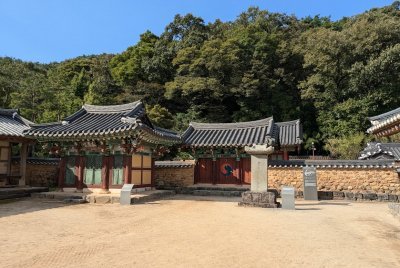
If you play Civilization VI, you know what a Seowon is: the Korean variant of the blue Campus District. A Seowon generates a lot of science, is cheap to build, and can give Korea a head-start in the science race.
In the real world, Seowons were Neo-Confucian academies established during the Joseon period. They served two central purposes: as shrines for ancestor worship and as academies for young nobles preparing for the civil servant examination.
The nine Seowons that form the WHS are scattered across Korea. We visited two: Oksan (part of the Yangdong Folk Village WHS) and Pilam. Of the two, Pilam was the better site. It's larger and better preserved. We felt transported back in time, imagining students listening to their instructor in the lecture hall. A word of advice: mind your head as the gatehouse has very low beams. Oksan, meanwhile, is undergoing major renovations (2024), making it hard to appreciate. It felt a bit small and didn't give the same "transported back in time" effect.
You'll encounter many more non-inscribed Seowons in Korea. Gyeongju has one, and there's another attached to the Yangdong Folk Village.
Getting There
- Pilam: Reachable by bus from Gwangju, followed by some walking or a rural bus/cab. We took a cab from the Gochang Dolmen Site.
- Oksan: Connected by direct bus from Gyeongju. The bus also stops at Yangdong Folk Village and runs roughly hourly.
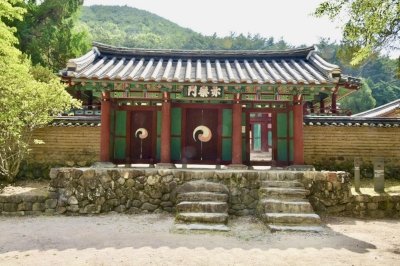
Back in 2018 because of the unbelievable expressway exit payment booth problem, I missed opportunity to visit Donam Seowon in Nonsan, five years later I returned to South Korea and I intent to fulfill my previous trip by visiting two listed Seowons, Oksan Seowon and Dodong Seowon during my 4th visit to Gyeongju. After breakfast I drove my rental car to Oksan Seowon, it was an enjoyable drive and I reached Oksan without problem. From empty carpark I passed the complex of traditional house and at the end of the walkway I found a complex of shrine-liked buildings and beautiful small river gorge with cascading waterfall, the whole area was perfect for hiking. After enjoyed mother nature, I started to look for Oksan Seowon, I walked back to that shrine-liked complex to find out that Oksan Seowon was in front of me!
I opened the old wooden door and found small courtyard surrounded by old wooden buildings which turned out to be classrooms. There was nothing inside these buildings, just empty room with some calligraphies on the walls. The layout of building reminded me of Hutong, a typical Northern Chinese House; however, since the complex was built on the slope, the different leveling of main two building was quite unique. Behind the classroom complex was the complex of shrine buildings that dedicated to local scholars instead of the Confucius which made Korean Seowons unique enough from other Confucian schools in China. I saw everything in the complex within 15 …
Keep reading 0 comments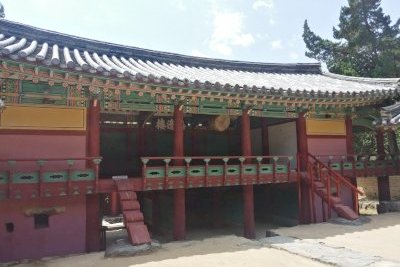
Going into my June 2023 trip to Korea, I definitely had in mind the prospect of checking out each of the 15 mainland World Heritage Sites (including Gaya Tumuli, which is set to be inscribed this year if all goes as expected) in the 9 days I had, but I did definitely question if it was worth filling up and rushing through the little time I had just to tick each box when, as far as I could see previously, many of the Korean WHS did not seem all that interesting from an outsider's perspective. You've got to admit there is quite a selection of tomb sites, and Joseon sites seem to cover every bit of their daily life, from palaces, shrines, and tombs to fortresses, villages, and schools. I just found the selection too full of seemingly unremarkable things that most outsiders would not find so interesting, impressive, or valuable to the world at large, and I wondered if my time would be better spent doing other things. Perhaps the epitome of this was the Seowon; these sites are not known for any sort of unique architectural/structural value but as "exceptional testimony to cultural traditions associated with Neo-Confucianism in Korea, in the form of educational and social practices" - that does not sound like a lot to see. As the trip went on, I grew more and more impressed with the Korean World Heritage; they showcase such a diverse and distinct history and culture with many unmatched skills and …
Keep reading 0 comments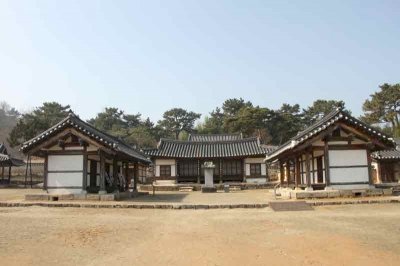
Visit February 2020 – I managed to visit 5 of the inscribed 9 Seowons on my road trip through Korea. In general, the visits of all Seowons were fairly similar. They mostly have the same buildings (dormitories, lecture halls, library, shrine and walls with a gate) that look the same. Entry to all but Sosu Seowon was free and you frankly don’t need much more than 15 minutes to visit a location. They all have info plates in English on premise and a nice “this is a world heritage site” stone in front of each Seowon. You will find free parking close to each Seowon, but most of the might be a bit tricky to reach with public transport.
Donam SeowonDonam is only a short detour while driving between the different Baekje locations. The Seowon is very close to the main road and the landscape is rather unspectacular and flat. Nevertheless I enjoyed the short visit as the weather was nice and I was the only visitor.
Museong SeowonMuseong is a short detour on the way between Wanggung-ri and the Gochang Dolmen Site. It is also located close to a bigger road and in an unspectacular location. Next to the Seowon is a newer Seowon, that is not part of the WHS. I skipped Pilam, because I simply ran out of time (and sunlight) for the day
Namgye SeowonThe Seowon is on route between Seonsamsa and Haeinsa Temple, very close to the express way …
Keep reading 0 comments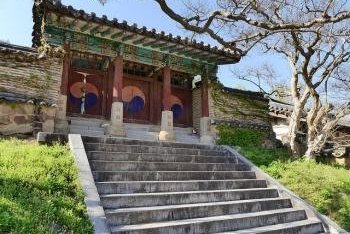
I visited 3 seowons in Andong in April 2017, namely Hwacheon Seowon, Dosan Seowon (already reviewed) and Byeongsan Seowon. The latter is strangely included in the core zone of the Hahoe WHS even though it is strictly speaking outside of the village.
Of the three seowons I visited, my favourite one was Byeongsan Seowon which is a formal Confucian academy founded in 1575. It was built with educational facilities for scholars and also for the younger generation and it also has a shrine for memorial services. In 1863, King Cheolgong bestowed a hanging board inscribed by the king's own hand with 4 hanggul characters that gave this seowon its name and making it one of the royally chartered private academies. In 1871, Daewongun, father of King Gojong, closed all but 47 private acadamies across the country. Byeongsan seowon was one of the 47.
Bongnyemun Gate, the main entrance, leads to the Mandaeru Pavilion and Ipgyodang, a lecture hall with dormitories called dongjae to the right and seojae to the left. Behind the dongjae stands Gojiksa, a residence for the academy caretaker. Behind Ipgyodang is Jangpangak, a storage space for wooden printing blocks and relics. Stairs lead to Naesammun (photo), the gate to Jongdeoksa shrine.
Byeongsan seowon is considered a model of architecture from the heydey of Confucian academies, built to be in harmony with the beautiful natural surroundings. Together with all the other seowons, I think they have potential to become WHS and it would make sense to remove the …
Keep reading 0 comments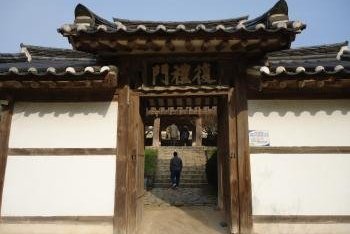
Byeongsan Seowon - easily located close to Hahoe Folk Village
Site visited in November, 2016. There are in fact 3 daily buses to Byeongsan from Andong. First morning bus (7.50 from nearby Andong Train Station is the most convenient if you want to see the village, it is the same bus that connects Andong with Hahoe, 46) it goes to Hahoe, then to Byeongsan Seowon and returns to Hahoe and heads to Andong.
Byeongsan Seowon itself looks recently restored- well maintained, covers relatively small area. All the buildings are described in Korean as well as in English (names and short explanation), easily visited, to see the building - half an hour should be enough, in fact the style of the buildings is similar to other Korean monuments. Don't miss the 400 years old restroom (having in mind the smell - it is still in use).
Between two sites (Byeongsan and Hahoe) there is a convenient hiking path - 4 km - be prepared to at least one hour walk as it is mountainous although on a map it looks straight forward. The road is well marked, although only in Korean. The hike is obvious from Byeongsan - the only option apart from returning the road that bus goes, although it is not shown on Google Maps nor described in Lonely Planet guidebook.
Keep reading 0 comments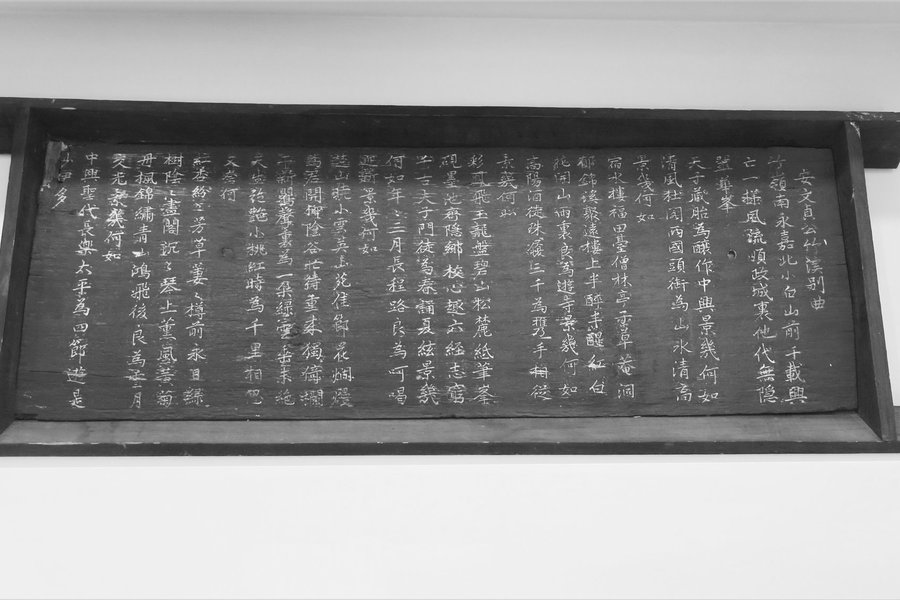
I visited Sosu Seowon (Yeongju) on a warm, sunny day in June. As the first Confucian Academy established in the Joseon Dynasty, it holds special significance. Before its construction in 1542, there is evidence this site was formerly a Buddhist temple. This explains the somewhat unconventional layout of this particular Seowon.
A slight misfortune, when I visited Donam Seowon (Nonsan), it was pouring rain with only slight intervals. This fact, likely contributed to its emptiness and less pictures. I found Donam Seowon to be pleasant, but far smaller. Its authenticity could also (at least partially) be put into question based on Donam Seowon being moved from its original location.
Yeongju and Andong are the best locations to reach several of the Seowon sites included in this nomination. Dosan Seowon and Sosu Seowon are the most known and celebrated.
As providence would have it my excursion to Dodong Seowon (Daegu) was not impacted by heavy storms nearby. In fact, my visit lasted almost exactly 40 minutes. The moment we returned to our vehicle to depart, a Summer downpour began. We were the only visitors exploring Dodong Seowon (before the rain) that morning, which allowed me to enjoy a photo session of the properties beauty.
Korean Seowon (Collage)
Because of a royal order of Heungseon Daewongun, father of King Gojong of the Joseon Dynasty, most Seowon were abolished and some were subsequently damaged or destroyed. However, despite the Anti-Confucian sentiment at the end of the Joseon Dynasty, the King's father spared 47 …
Keep reading 0 comments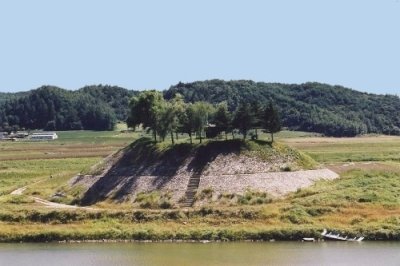
Seowons were private institutions combining education (in the form of preparation for admission to the national civic service) and Neo-Confucian worship. A serial proposal such as this is always worth checking out in detail, as there may be hidden surprises among the selected locations. Personally, I was happy to discover Dosan Seowon among the entries listed, a site that I visited on my Korea trip in 2001.
Dosan Seowon is located not far from Hahoe WHS, and I visited both on the same day (I even included a third 'national treasure', Jebiwon Buddha). My trip notes about Dosan Seowon are brief: “Idyllic location. Very quiet, only a handful of visitors. Lots of Korean film directors apparently come here for shooting traditional Korean footage.”. All memory of my activities of that day have since blurred, and the fact that I had not labeled the photos in my Korea photo album does not help either (mind you, 2001 was the pre-digital age).
There’s a large difference between the way I am visiting (future) WHS nowadays and how I travelled 15 years ago: I now put considerably more effort into arriving prepared. This research has only become possible because there is so much more information readily available. Dosan Seowon for example has a very detailed official website, where you can virtually walk through the complex. Each structure is shown and described. Thanks to that I was able to add captions to the photos.
Trying to relive my visit, I found …
Keep reading 0 comments
